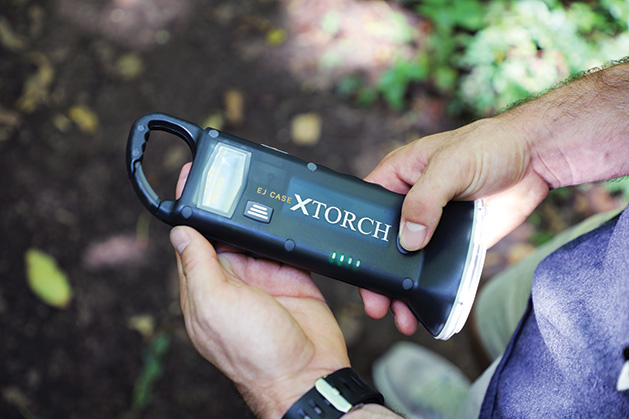
People in pre-industrial, developing countries often face unique challenges that call for unique solutions. No one knows that better than Edina resident Gene Palusky, a veteran international missionary who helped develop a solar-powered light and cell phone charger called the Xtorch that is making a difference in several countries.
Palusky grew up in Minneapolis and earned a degree from Macalester College. He spent several years rehabbing and renting apartment buildings in Minneapolis, until selling that business about three years ago to focus on the XTorch.
Palusky worked in community development alongside his wife, Keidy, a missionary who delivered food in Equatorial Guinea with an organization called Amemos. In 1991, he and his brother, David Palusky, developed a solar powered audio-video system used to teach curricula in Tanzania and other remote/off-the-grid areas for up to 2,000 people at a time.
Later, doing community development work in the Dominican Republic, Gene Palusky saw school kids who had to study by the light of kerosene lanterns that have the same effect on their lungs as smoking two packs a day. He decided to develop a better portable light source.
Palusky established his Edina-based firm EJ Case four years ago and spent two years developing the Xtorch. Bob Sweat, an engineer with the Christian Technology Center (CTC) in Ellijay, Ga., helped Palusky develop the specs for the XTorch, as a consultant.
CTC is a non-denominational group of Christian engineers and business people who design and manufacture mobile, solar powered devices for distribution to humanitarian and faith-based organizations working around the world.
Sweat and his wife, Ann, purchased a number of XTorches to be given to Haitians during recovering from an earthquake. Sweat calls the XTorch, “an incredible product that turned out better than either one of us thought it would.” EJ Case also sent out thousands of Xtorches to about 25 countries and, “we got a lot of feedback on how to improve it,” Palusky says.
Xtorch features a “super-powerful flashlight,” Palusky says, with a USB outlet that can be used to charge cell phones, which have become “a conduit for empowerment throughout Africa.
People can communicate among themselves and with markets. It is sustainable, reliable and impervious to just about everything.” The devices are manufactured in China, for cost-effectiveness.
Solar battery technology has steadily improved and the microprocessor that controls the XTorch is specially designed “to get the most efficiency, with twice the run time” on one charge, Palusky says. To make stored power last longer, the circuit board turns the light off and on many times a second, “so fast the eye can’t see. It uses less power but still brightens the room,” he says.
The company recently introduced a newer version that features a major improvement: a unique, double lens that enables converting the torch from a flashlight to a lantern that can light up a room. A volunteer optical engineer Palusky found in the Twin Cities designed it.
The Xtorch can last from seven to 10 years and holds battery capacity for up to three years without charging, according to the brand. The new model launched recently is a major upgrade to previous iterations, boasting twice the battery capacity and four times the brightness.
It sells for $60.









